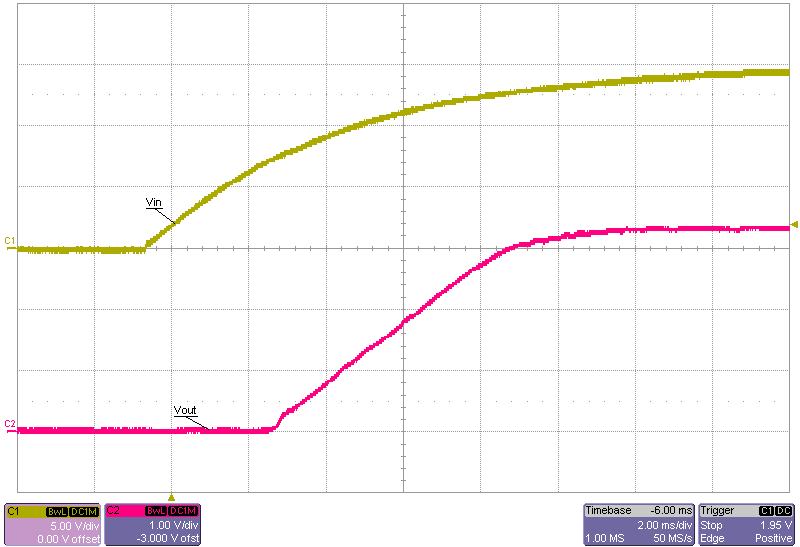SLVU263A August 2008 – October 2021 TPS54231
2.9 Powering Up
The start-up waveforms are shown in Figure 2-9 and Figure 2-10. In Figure 2-9, the top trace shows VIN, and the bottom trace shows VOUT. In Figure 2-10 , the top trace shows EN (enable) whereas the bottom trace shows VOUT. In Figure 2-10, the input voltage is initially applied and the output is inhibited by using a jumper at J2 to tie EN to GND. When the jumper is removed, EN is released. When the EN voltage reaches the enable-threshold voltage of 1.25 V, the start-up sequence begins and the internal reference voltage begins to ramp up at the internally set rate toward 0.8 V and the output voltage ramps up to the externally set value of 3.3 V. The input voltage for these plots is 15 V and there is no load.
 Figure 2-9 TPS54231EVM-372 Start-Up Relative to VIN
Figure 2-9 TPS54231EVM-372 Start-Up Relative to VIN